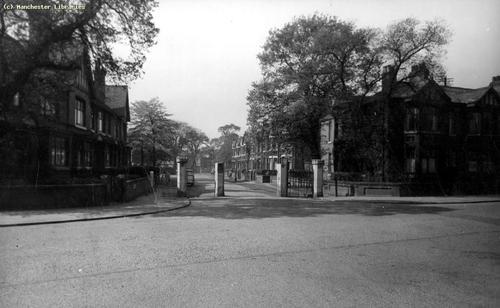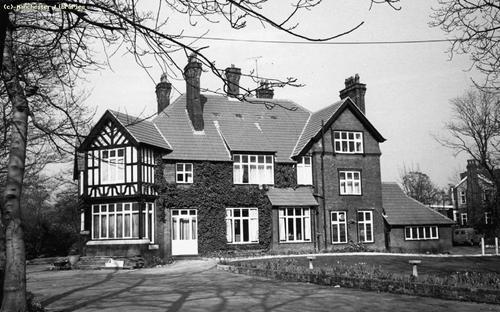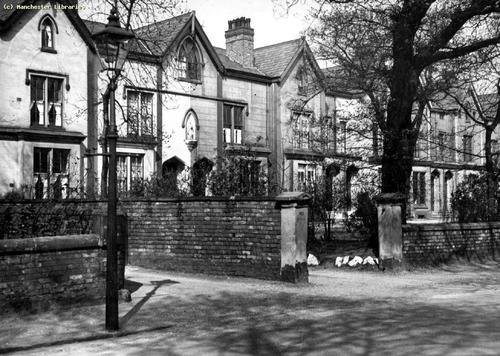
Mosley Street 1825
In 1827 Henry Charles Lacy converted a house at the corner of Mosley Street and Market Street into an hotel and allowed rooms in the building to be used for warehousing. A rash of house conversions and warehouse building followed over the next decade as property values soared. One house was sold in 1832 for eight thousand guineas, twice its’ vaue of only five years earlier. By the end of the thirties, Mosley Street consisted almost entirely of warehouses, the former resident having moved to the new suburbs such as Victoria Park and Didsbury.
Victoria Park was opened in 1837. An area of 140 acres had been obtained by a company of gentlemen in order to build villas which would be let for between £100 and £250 per annum. The notable architect, Richard Lane was engaged to design the park, laying out roadways, boundaries and landscaping and designing the gate lodges. The park had its’ own tollgates, walls and police.

Plymouth Grove Toll Gates
By December of the following year only nine houses had been completed and the company was bankrupt. A new group, The Victoria Park Trust was founded. Within the next five years a further sixty five houses had been built. These were often large mansions with extensive gardens and required a sizeable staff to maintain them. By the end of the nineteenth century, these villas were already being converted into hotels, colleges and nursing homes. Their weathy residents had been tempted to move further from the city to the newly fashionable area such as Bowden and Alderley Edge.
The building of Victoria Park was by a number of architects in addition to Lane, Edward Salomons built “The Gables” and this was to become his home.

The Gables, Hope Road

First Church of Christ, Scientist
In Daisy Bank Road is the Grade 1 listed “First Church of Christ, Scientist” built by Edgar Wood in 1903 and on Lower Park Road the Xaverian College by Alfred Waterhouse, now a Roman Catholic school for 2000 pupils.
The park was home to a number of notable residents. 102 Daisy Bank Road was home to Charles Halle and was later occupied by Ford Madox Brown at the time when he was painting the murals in Manchester Town Hall.

Daisy Bank Road. 102 is the first door on the right.
Richard Cobden was a calico printer and political activist. In Newton Street lived Emmeline Pankhurst, leader of the suffragette movement and in nearby Plymouth Grove was the home of author Elixabeth Gaskell. Marie Nordlinger and Martin Solibakke were both writers; Elias Bancroft, a painter and George Hadfield a lawyer and radical polititian who played a leading role in establishing the Anti Corn Law League. People from a number of nationalities lived in Victoria Park including a large chinese merchant community.

Lower Park Road
Today many of the buildings are used as university residences whilst others have been converted into flats. Victoria Park is a conservation area and twenty of its’ buildings are listed.
